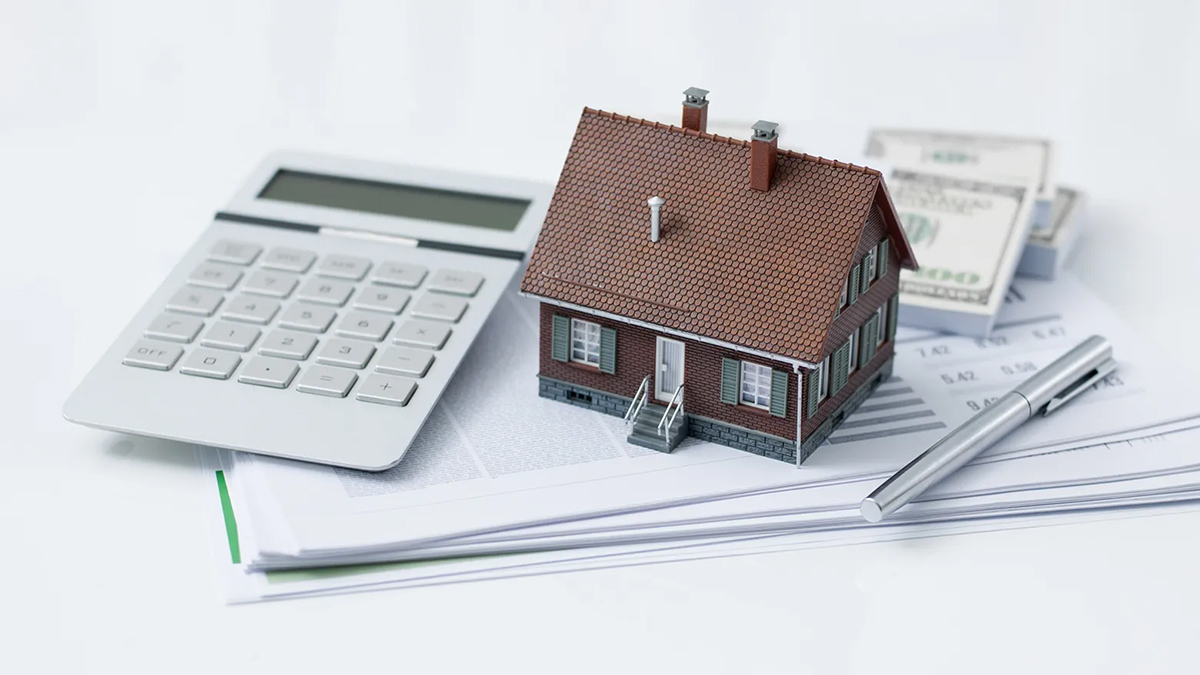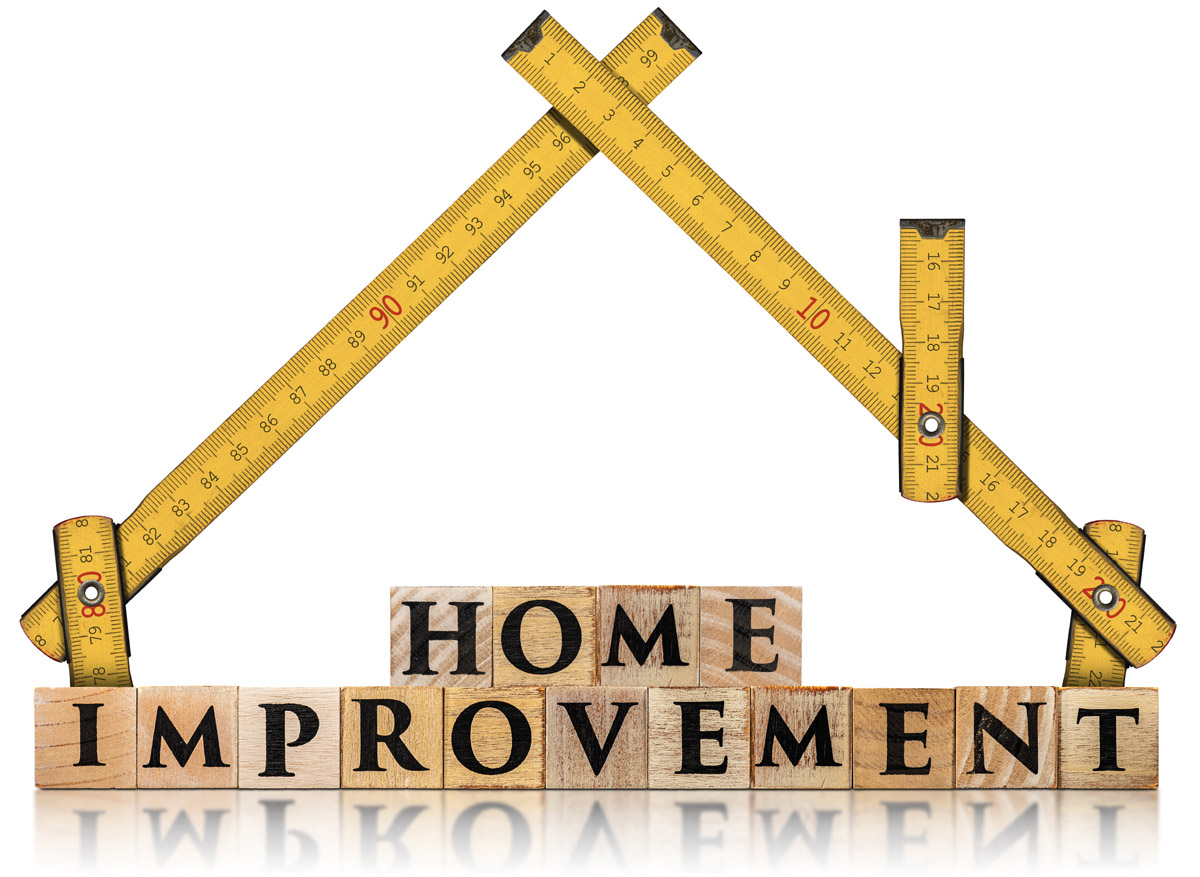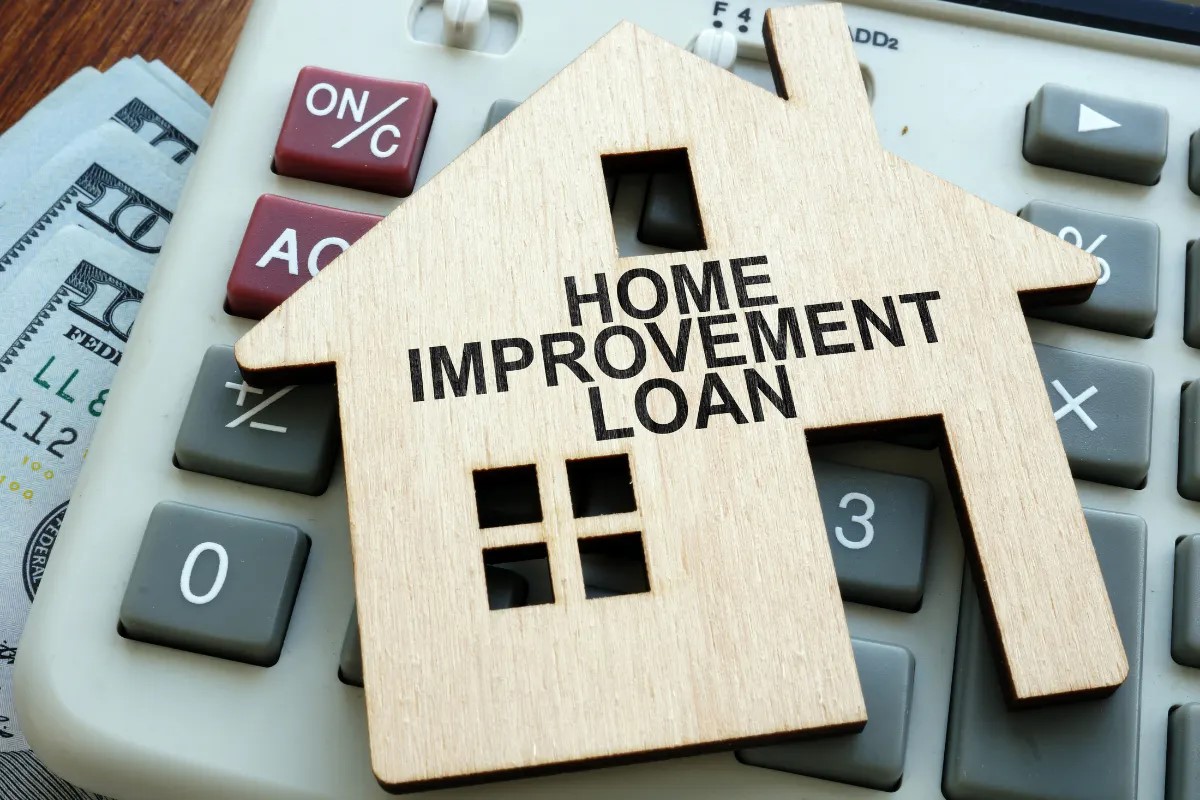Home>Renovation & DIY>Home Renovation Guides>What Would The Cost Be To Take Out A Home Improvement Loan


Home Renovation Guides
What Would The Cost Be To Take Out A Home Improvement Loan
Modified: January 9, 2024
Find out the potential costs of taking out a home improvement loan with our comprehensive home renovation guide. Explore your options and make informed decisions.
(Many of the links in this article redirect to a specific reviewed product. Your purchase of these products through affiliate links helps to generate commission for Storables.com, at no extra cost. Learn more)
Introduction
Embarking on a home improvement project can be an exhilarating endeavor. Whether you're envisioning a kitchen remodel, a bathroom upgrade, or a long-awaited backyard transformation, the prospect of enhancing your living space is undeniably exciting. However, the financial aspect of such undertakings often looms large, prompting many homeowners to seek viable solutions to fund their renovation dreams.
One such solution is a home improvement loan, which can provide the necessary financial support to turn your renovation vision into a tangible reality. Before delving into the specifics of home improvement loans, it's crucial to understand the various factors that should be carefully considered before taking this financial leap.
In the following sections, we'll explore the essential factors to contemplate before opting for a home improvement loan, the different types of loans available, the associated costs, and the steps involved in applying for this form of financial assistance. By gaining a comprehensive understanding of these facets, you'll be better equipped to make informed decisions and navigate the process with confidence.
So, let's delve into the world of home improvement loans and unravel the intricacies of financing your home renovation endeavors. Whether you're aiming to revamp your living space for personal enjoyment or to increase the value of your property, a well-informed approach to securing financial support is a vital first step in transforming your renovation aspirations into a stunning reality.
Key Takeaways:
- Before getting a home improvement loan, consider your project scope, budget, property value, and financial goals. Understanding these factors will help you make informed decisions and manage your finances wisely.
- Different types of home improvement loans have unique features and costs. By exploring your options and understanding the expenses involved, you can choose the best loan for your renovation needs and manage your borrowing responsibly.
Read more: What Is The Best Loan For Home Improvement
Factors to Consider Before Taking Out a Home Improvement Loan
Before diving into the process of obtaining a home improvement loan, it’s imperative to assess several key factors to ensure that this financial decision aligns with your overall goals and financial well-being.
- Project Scope: Evaluate the scope of your home improvement project. Determine the specific renovations or upgrades you intend to undertake, their estimated costs, and the potential impact on your home’s value and livability. Understanding the scope of the project will help you gauge the amount of financing required.
- Budgetary Analysis: Conduct a comprehensive review of your current financial situation. Assess your income, existing debts, and monthly expenses to ascertain your ability to take on additional loan payments. Creating a detailed budget will provide clarity on how much you can afford to borrow without straining your finances.
- Equity and Property Value: Consider the equity in your home and its current market value. Home equity is a crucial factor in securing favorable loan terms and amounts. Understanding your property’s value and equity position will influence the type of loan you pursue and the potential loan-to-value ratio.
- Loan Repayment Period: Determine the ideal repayment period for the loan. Assess your comfort level with the monthly payments and the overall interest costs over the loan term. Shorter loan terms typically result in higher monthly payments but lower overall interest expenses, while longer terms offer lower monthly payments but higher interest costs.
- Interest Rates and Loan Options: Research the prevailing interest rates for home improvement loans and explore the various loan options available. Compare fixed-rate and adjustable-rate loans, as well as government-backed loan programs, to identify the most suitable financing structure for your needs.
- Financial Goals: Align the home improvement project with your broader financial objectives. Consider whether the renovations are primarily for personal enjoyment or if they are intended to increase the resale value of your home. Understanding your financial goals will influence the level of investment you are willing to make.
By carefully evaluating these factors, you can gain a clear understanding of the financial implications and requirements associated with a home improvement loan. This informed approach will empower you to make sound decisions and embark on your renovation journey with confidence and financial prudence.
Types of Home Improvement Loans
When it comes to financing home improvement projects, there are several types of loans designed to cater to diverse needs and financial circumstances. Understanding the characteristics and eligibility criteria of these loan options can help you choose the most suitable financing avenue for your specific renovation endeavors.
- Home Equity Loan: Also known as a second mortgage, a home equity loan allows homeowners to borrow against the equity in their property. This type of loan typically offers a fixed interest rate and a lump-sum disbursement, making it ideal for large, one-time expenses such as extensive renovations or additions.
- Home Equity Line of Credit (HELOC): Similar to a home equity loan, a HELOC enables homeowners to access funds by leveraging their home’s equity. However, a HELOC operates as a revolving line of credit, providing flexibility to borrow as needed, repay, and borrow again during the draw period. This makes it suitable for ongoing or phased home improvement projects with varying costs over time.
- Personal Loans: Unsecured personal loans are another option for financing home improvements. These loans do not require collateral and are based on the borrower’s creditworthiness. Personal loans offer flexibility and a streamlined application process, making them suitable for smaller renovation projects with predictable costs.
- Cash-Out Refinance: With a cash-out refinance, homeowners can refinance their existing mortgage for a higher amount than what is currently owed, receiving the difference in cash. This option is beneficial when interest rates are lower than the original mortgage rate, and the additional funds are earmarked for substantial home improvements.
- FHA Title I Property Improvement Loan: This government-backed loan program is designed for home improvements and renovations. It does not require equity in the property and can be used for both structural and non-structural upgrades. FHA Title I loans are accessible to homeowners with limited home equity and may feature competitive interest rates.
Each type of home improvement loan has distinct features, eligibility requirements, and repayment terms. By exploring these options and assessing their alignment with your renovation goals, financial situation, and property equity, you can select the most suitable loan type to fund your home improvement project effectively.
Before taking out a home improvement loan, compare interest rates and fees from different lenders. Consider the total cost of the loan, including any closing costs or prepayment penalties.
Costs Associated with Home Improvement Loans
While home improvement loans provide a valuable means of financing renovation projects, it’s essential to understand the various costs associated with these loans. By gaining insight into the potential expenses, you can make informed decisions and plan for the financial implications of borrowing for home improvements.
- Interest Payments: One of the primary costs of a home improvement loan is the interest charged on the borrowed amount. The interest rate, which can be fixed or variable depending on the loan type, contributes to the overall cost of the loan. Lower interest rates can lead to reduced long-term expenses, making it crucial to secure favorable rates.
- Origination Fees: Many lenders charge origination fees to cover the cost of processing the loan. These fees, typically calculated as a percentage of the loan amount, contribute to the upfront expenses of obtaining the loan. It’s important to factor in origination fees when assessing the total cost of borrowing.
- Closing Costs: Similar to a mortgage, home improvement loans may entail closing costs, including appraisal fees, title insurance, and attorney fees. These costs can add to the overall expense of securing the loan and should be considered when evaluating the financial viability of the renovation project.
- Repayment Terms: The repayment structure of the loan impacts the total cost of borrowing. Longer loan terms may result in higher overall interest payments, while shorter terms typically lead to larger monthly installments but lower total interest expenses. Understanding the trade-offs between repayment periods and total costs is essential in managing the financial impact of the loan.
- Penalties and Fees: Some home improvement loans may carry prepayment penalties or late payment fees. It’s crucial to review the loan terms and conditions to identify any potential penalties that could increase the overall cost of the loan. Avoiding unnecessary penalties can help minimize the financial burden of borrowing.
By considering these costs associated with home improvement loans, you can develop a comprehensive understanding of the financial implications and obligations involved in borrowing for renovation purposes. This knowledge empowers you to make well-informed decisions, select the most cost-effective loan options, and effectively manage the expenses associated with your home improvement project.
How to Apply for a Home Improvement Loan
Securing a home improvement loan involves a systematic process that encompasses thorough preparation, research, and diligent application procedures. By following these essential steps, you can streamline the loan application process and increase the likelihood of obtaining favorable financing for your renovation project.
- Evaluate Financing Options: Begin by researching the various types of home improvement loans available, considering their eligibility criteria, interest rates, and repayment terms. Compare the features of each loan option to identify the most suitable financing avenue for your specific renovation needs.
- Assess Your Creditworthiness: Obtain a copy of your credit report and review your credit score. A strong credit history and a favorable credit score can enhance your eligibility for competitive loan terms and interest rates. Address any discrepancies in your credit report and take steps to improve your creditworthiness if needed.
- Prepare Documentation: Gather essential financial documents, including income statements, tax returns, employment verification, and asset information. Organizing these documents in advance will expedite the application process and demonstrate your financial stability to potential lenders.
- Obtain Loan Pre-Approval: Consider seeking pre-approval for a home improvement loan from multiple lenders. Pre-approval provides insight into the loan amount you qualify for and demonstrates your seriousness as a borrower. Compare pre-approval offers to assess the most favorable terms and conditions.
- Submit the Loan Application: Complete the loan application with the chosen lender, providing accurate and comprehensive information. Be prepared to detail the specific renovation plans, estimated project costs, and the intended use of the loan funds. Transparently communicating your renovation vision can strengthen your application.
- Review Loan Terms: Upon receiving loan offers, carefully review the terms, interest rates, repayment schedules, and associated fees. Seek clarification on any aspects of the loan agreement that require further explanation and ensure that you fully comprehend the financial obligations and conditions of the loan.
- Finalize the Loan Agreement: Once you’ve selected a favorable loan offer, proceed to finalize the loan agreement with the lender. Review the closing documents, verify the accuracy of the loan details, and ensure that all pertinent terms and conditions align with your expectations and financial objectives.
By methodically navigating the home improvement loan application process, you can position yourself as a well-informed and prepared borrower. This proactive approach not only increases your chances of securing favorable financing but also facilitates a smooth and efficient progression toward realizing your home renovation aspirations.
Conclusion
Embarking on a home improvement project is a thrilling journey that holds the promise of transforming your living space into a personalized haven. However, the financial aspect of renovations often necessitates strategic planning and prudent decision-making, particularly when considering the option of a home improvement loan. By carefully evaluating the factors, exploring the loan types, understanding the associated costs, and navigating the application process, you can effectively harness the power of financing to bring your renovation vision to life.
Before delving into the realm of home improvement loans, it’s crucial to assess the scope of your project, analyze your financial readiness, and align your renovation goals with your broader financial aspirations. Understanding the implications of borrowing for home improvements empowers you to make informed choices and embark on your renovation journey with confidence.
As you explore the diverse types of home improvement loans, ranging from home equity options to government-backed programs, consider their unique features and suitability for your specific renovation needs. Each loan type presents distinct advantages and considerations, allowing you to tailor your financing approach to align with your project scope and financial circumstances.
Furthermore, gaining insight into the costs associated with home improvement loans, including interest payments, origination fees, and repayment terms, enables you to assess the financial impact of borrowing and make prudent decisions to manage the expenses effectively.
When it comes to applying for a home improvement loan, a methodical approach that involves evaluating financing options, preparing documentation, and seeking pre-approval can enhance your prospects of securing favorable financing terms. By engaging in comprehensive research, transparent communication, and diligent review of loan offers, you can position yourself as a well-prepared borrower poised for success.
In conclusion, the journey toward financing your home improvement project through a loan is characterized by careful consideration, proactive planning, and informed decision-making. By leveraging the insights and strategies outlined in this guide, you can navigate the complexities of home improvement loans with confidence, ultimately transforming your renovation aspirations into a stunning reality.
Frequently Asked Questions about What Would The Cost Be To Take Out A Home Improvement Loan
Was this page helpful?
At Storables.com, we guarantee accurate and reliable information. Our content, validated by Expert Board Contributors, is crafted following stringent Editorial Policies. We're committed to providing you with well-researched, expert-backed insights for all your informational needs.















0 thoughts on “What Would The Cost Be To Take Out A Home Improvement Loan”